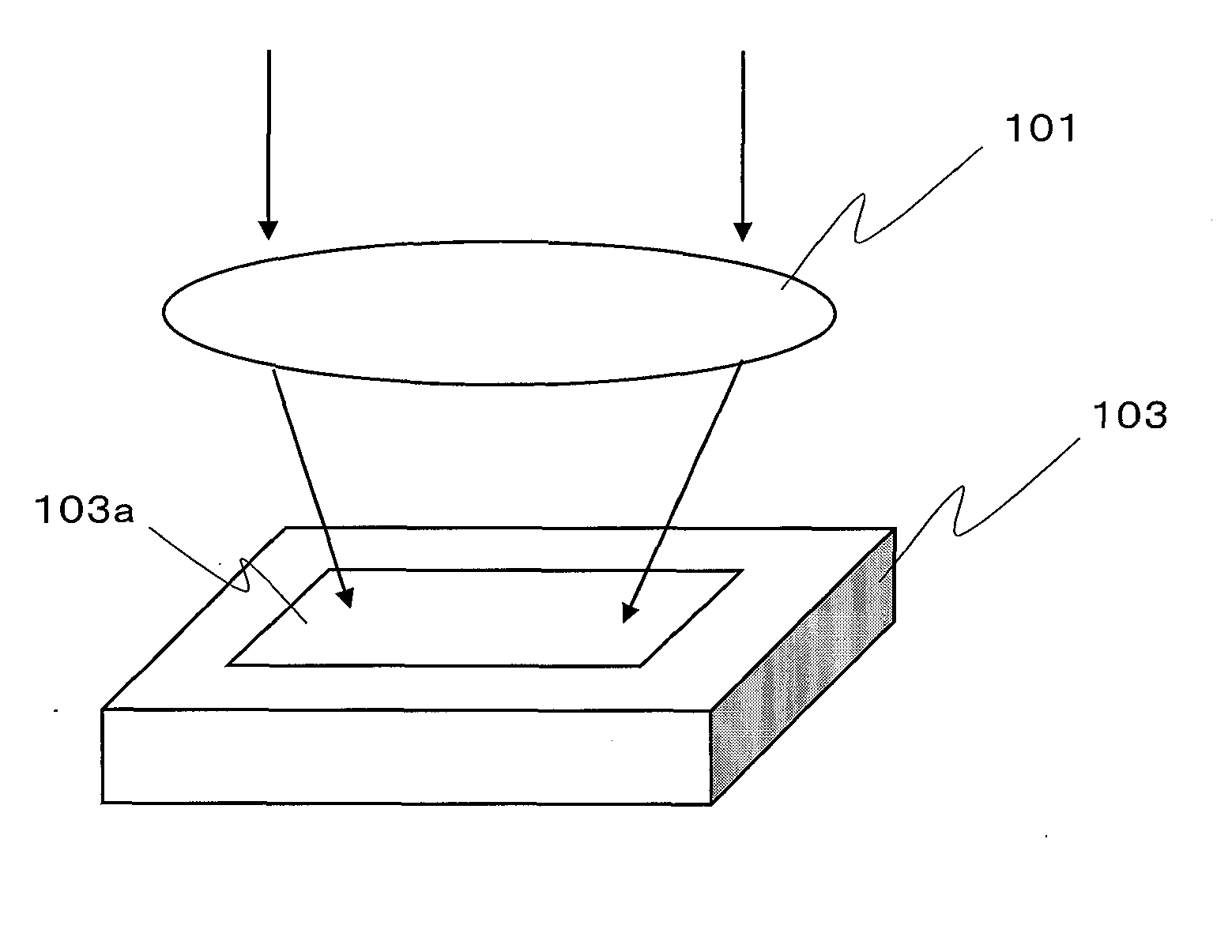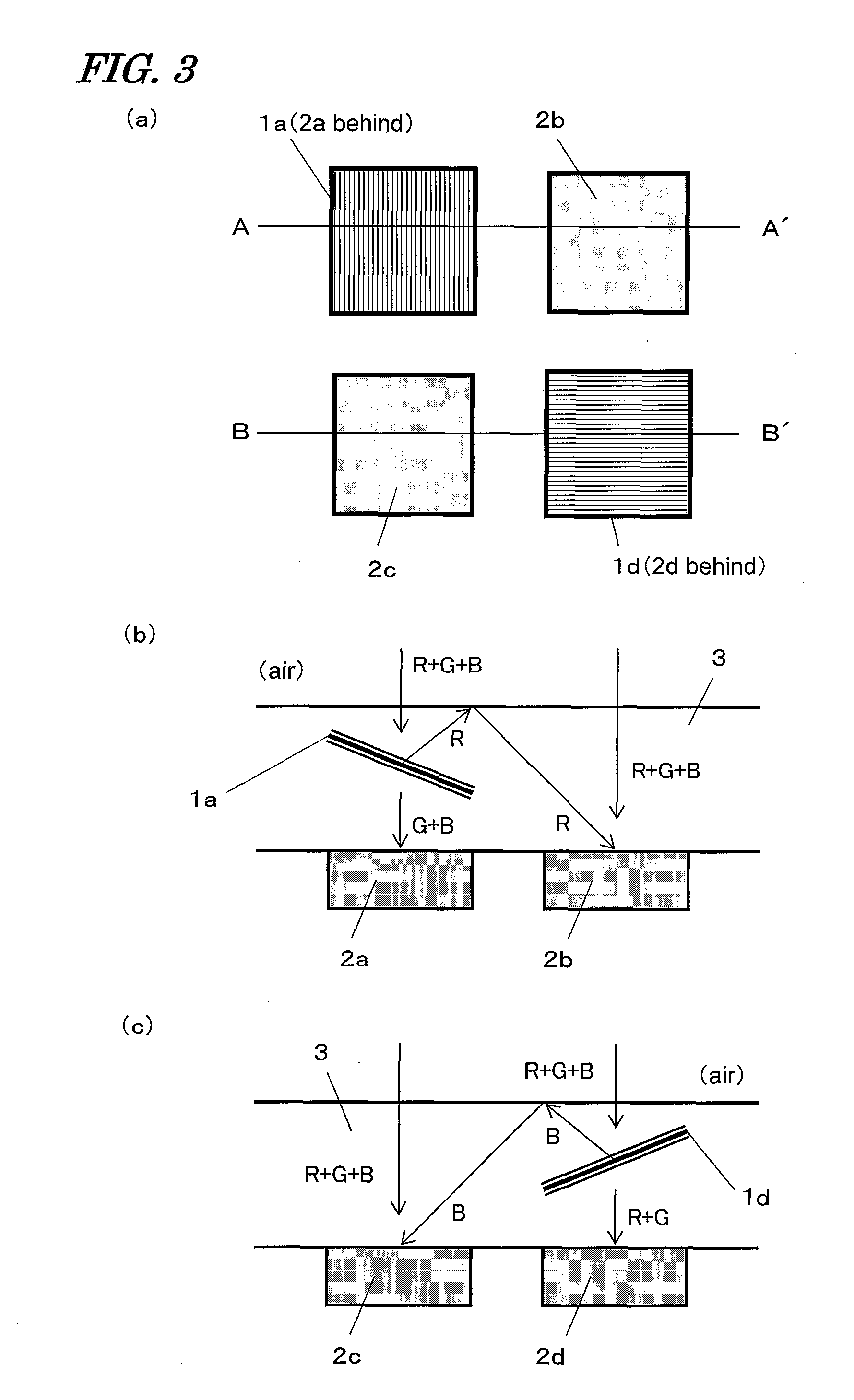Imaging device
a technology of image sensor and image sensor, which is applied in the direction of picture signal generator, television system scanning details, television system, etc., can solve the problems of inability to achieve 100% optical efficiency, inability to achieve optical efficiency, and inability to reduce so as to achieve the effect of increasing optical efficiency and reducing the number of photosensitive cells to us
- Summary
- Abstract
- Description
- Claims
- Application Information
AI Technical Summary
Benefits of technology
Problems solved by technology
Method used
Image
Examples
embodiment 1
[0058]FIG. 1 illustrates an overall configuration for an image capture device as a first specific preferred embodiment of the present invention. The image capture device shown in FIG. 1 includes an image capturing section 100 and an image signal processing section 200 that receives a signal from the image capturing section 100 and generates a video signal. The configuration and operation of the image capturing section 100 and the image signal processing section 200 will be described.
[0059]The image capturing section 100 includes a lens 101 for imaging a given subject, an optical plate 102, an image sensor 103 for converting optical information, which has been collected by imaging the subject through the lens 101 and the optical plate 102, into an electrical signal by photoelectric conversion, and a signal generating and pixel signal receiving section 104. In this case, the optical plate 102 is a combination of a quartz crystal low-pass filter for reducing a moiré pattern to be cause...
embodiment 2
[0083]Hereinafter, a second specific preferred embodiment of the present invention will be described with reference to FIGS. 6(a) and 6(b). FIG. 6(a) is a plan view illustrating the fundamental arrangement of a dichroic mirror and photosensitive cells of an image sensor in an image capture device as the second preferred embodiment of the present invention, while FIG. 6(b) is a cross-sectional view of the image sensor as viewed on the plane C-C′ shown in FIG. 6(a).
[0084]The image sensor of this preferred embodiment has a fundamental unit consisting of photosensitive cells 2a and 2b that are arranged in two columns and one row and a dichroic mirror 1a that is arranged to face the photosensitive cell 2a. Unlike the first preferred embodiment of the present invention described above, the photosensitive cell 2b of this preferred embodiment has two photoelectric conversion regions 4a and 4b, which are designed to receive light rays falling within mutually different wavelength ranges and o...
embodiment 3
[0088]Hereinafter, a third specific preferred embodiment of the present invention will be described with reference to FIGS. 7(a) and 7(b). An ordinary camera receives visible radiation through an infrared cut filter. Conversely, an infrared camera receives an infrared ray through an infrared pass filter. The image capture device of this preferred embodiment realizes a camera, of which the imaging area receives both visible radiation and an infrared ray alike without using an infrared cut filter. Specifically, according to this preferred embodiment, a mirror that reflects an infrared ray and transmits visible radiation is used. That is why this preferred embodiment does not contribute to getting color representation done by the image sensor but does use the principle of the present invention essentially. FIG. 7(a) is a plan view illustrating the fundamental arrangement of an image sensor according to a third specific preferred embodiment of the present invention, while FIG. 7(b) is a...
PUM
 Login to View More
Login to View More Abstract
Description
Claims
Application Information
 Login to View More
Login to View More - R&D
- Intellectual Property
- Life Sciences
- Materials
- Tech Scout
- Unparalleled Data Quality
- Higher Quality Content
- 60% Fewer Hallucinations
Browse by: Latest US Patents, China's latest patents, Technical Efficacy Thesaurus, Application Domain, Technology Topic, Popular Technical Reports.
© 2025 PatSnap. All rights reserved.Legal|Privacy policy|Modern Slavery Act Transparency Statement|Sitemap|About US| Contact US: help@patsnap.com



